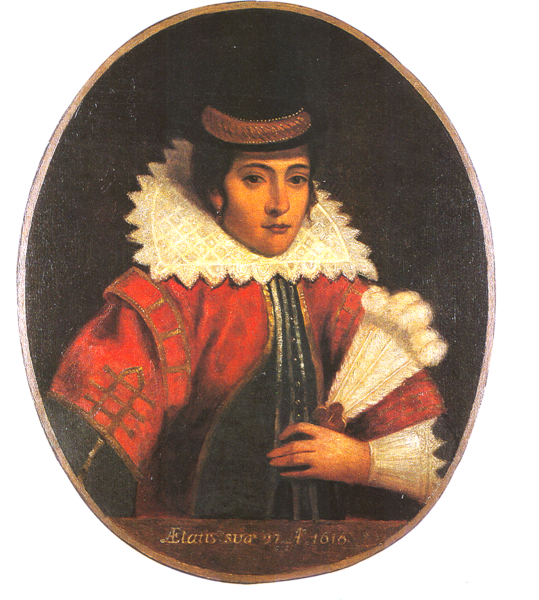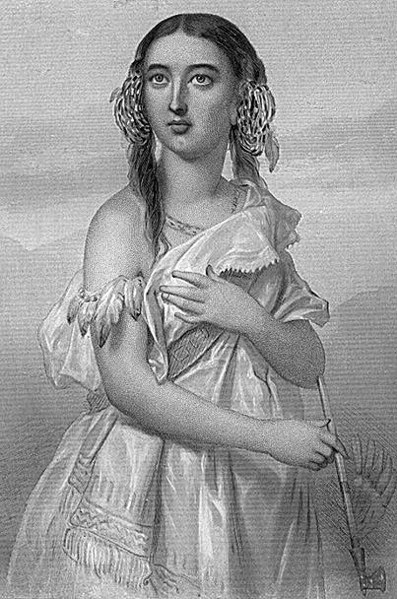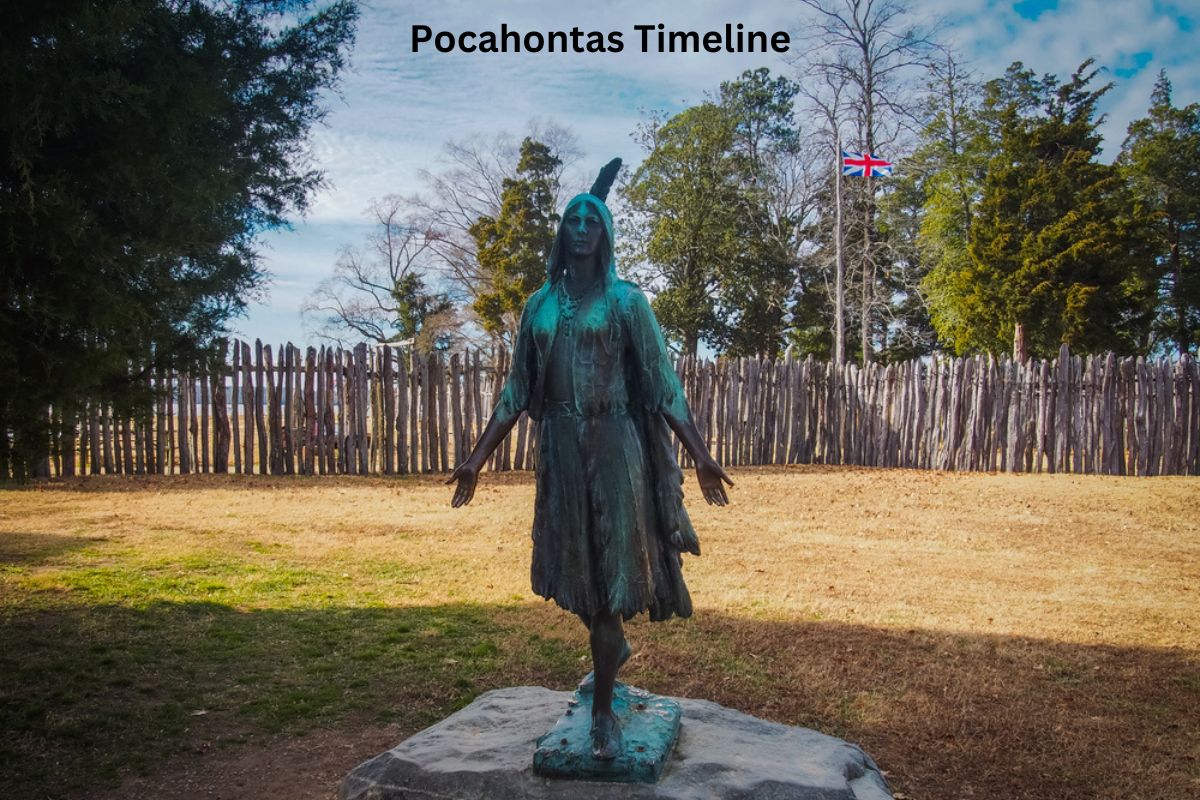Pocahontas, whose Native American name was Matoaka, is a figure of historical significance in early colonial American history.
Born in the late 16th century in what is now Virginia, she became known for her interactions with English settlers, including the famous encounter with John Smith, her conversion to Christianity, and her marriage to John Rolfe.
Pocahontas played a unique role as a bridge between Native American culture and the English colonial world, leaving an indelible mark on the complex history of early America. This brief introduction sets the stage for a deeper exploration of her life and contributions.
| Year | Event |
|---|---|
| 1595 or 1596 | Pocahontas is born in the Powhatan Confederacy. |
| 1607 | English settlers arrive in Jamestown, Virginia, establishing the first permanent English settlement in America. |
| 1607-1608 | Pocahontas becomes involved in interactions with the English settlers, including visits to the Jamestown settlement. |
| 1608 | John Smith, one of the English leaders at Jamestown, is captured by the Powhatan Confederacy. Pocahontas intervenes and saves his life, according to Smith’s accounts (debated). |
| 1610 | Pocahontas is captured by the English during hostilities and held hostage at Jamestown. |
| 1613 | While in captivity, Pocahontas is baptized and given the Christian name “Rebecca.” She converts to Christianity. |
| 1614 | Pocahontas marries John Rolfe, an English tobacco planter, symbolizing peace between the Powhatan Confederacy and English settlers. |
| 1615 | Pocahontas gives birth to a son named Thomas Rolfe. |
| 1616 | Pocahontas and John Rolfe travel to England. Pocahontas meets English royalty. |
| 1617 | Pocahontas falls seriously ill and dies in England at around age 21 or 22. |
Timeline of Pocahontas
1595 or 1596: Pocahontas is born in the Powhatan Confederacy
Pocahontas, whose Native American name was Matoaka, was born around 1595 or 1596 in the Powhatan Confederacy, in what is now Virginia, USA.
Also Read: Pocahontas Accomplishments
She was the daughter of Chief Powhatan, who was the paramount chief of the Powhatan Confederacy, a group of Algonquian-speaking tribes in the Tidewater region of Virginia.

1607: English settlers arrive in Jamestown, Virginia, establishing the first permanent English settlement in America
In 1607, the English settlers, led by the Virginia Company of London, established the Jamestown settlement in Virginia. This marked the beginning of the Virginia Colony and is considered one of the earliest permanent English settlements in North America.
1607-1608: Pocahontas becomes involved in interactions with the English settlers, including visits to the Jamestown settlement
Pocahontas’s life became intertwined with the English settlers shortly after their arrival in Jamestown. She was known to visit the Jamestown settlement occasionally, and her presence and actions during this time have been the subject of various accounts and legends.
1608: John Smith, one of the English leaders at Jamestown, is captured by the Powhatan Confederacy
One of the most famous stories involves John Smith, one of the English leaders at Jamestown. According to Smith’s account, he was captured by the Powhatan Confederacy in 1608 and brought before Chief Powhatan for a mock execution.
Also Read: Pocahontas Facts
Pocahontas, who was around 12 or 13 years old at the time (accounts vary), intervened and supposedly saved Smith’s life. This event, known as “Pocahontas saving John Smith,” has been celebrated in American folklore, but its accuracy is debated among historians, as there are conflicting accounts and interpretations.
Pocahontas’s interactions with the English settlers during this period reflected a complex and evolving relationship between the Powhatan Confederacy and the colonists. Her role as a bridge between these two cultures would have a lasting impact on the history of early colonial America.

1610: Pocahontas is captured by the English during hostilities and held hostage at Jamestown
In 1610, tensions between the Powhatan Confederacy and the English settlers in Jamestown escalated. During a period of hostilities, Pocahontas was captured by the English. She was held hostage as a prisoner in Jamestown. This event marked a significant turning point in her life.
1613: While in captivity, Pocahontas is baptized and given the Christian name “Rebecca”
During her captivity in Jamestown, Pocahontas converted to Christianity and was baptized. She was given the Christian name “Rebecca” by the English colonists. This religious conversion was a significant step in her life and symbolized her integration into English colonial society.
Pocahontas’s conversion to Christianity played a role in shaping her identity and her interactions with the English settlers. It also contributed to her eventual marriage to an Englishman.
1614: Pocahontas marries John Rolfe, an English tobacco planter
Pocahontas’s marriage to John Rolfe, an English tobacco planter, took place in 1614. This union was seen as a pivotal moment in the history of early Virginia, as it symbolized a period of relative peace and cooperation between the Powhatan Confederacy and the English settlers.
The marriage between Pocahontas and John Rolfe was not only a personal relationship but also a political alliance. It was hoped that their union would help maintain peace between the two groups and facilitate trade and cooperation.
The couple had one child together, a son named Thomas Rolfe, who was born in 1615. Thomas Rolfe would later play a role in bridging the Native American and English cultures as he grew older.
1615: Pocahontas gives birth to a son named Thomas Rolfe
Pocahontas and John Rolfe had a son named Thomas Rolfe in 1615. Thomas was a product of their intercultural marriage and represented a unique blend of Native American and English heritage.
Thomas Rolfe’s heritage would later play a role in his life as he sought to navigate his identity and connections to both the Powhatan Confederacy and the English colonists.

1616: Pocahontas and John Rolfe travel to England. Pocahontas meets English royalty
In 1616, Pocahontas and John Rolfe embarked on a journey to England, leaving their young son, Thomas, behind in Virginia. Their voyage to England was a significant step in Pocahontas’s life and in the history of Native American-European interactions.
While in England, Pocahontas was introduced to English society and met with various dignitaries, including King James I and Queen Anne. She became somewhat of a celebrity, and her presence generated considerable interest.
During her time in England, Pocahontas was often referred to as “Lady Rebecca Rolfe,” highlighting her elevated status as a result of her marriage to John Rolfe and her conversion to Christianity.
1617: Pocahontas falls seriously ill and dies in England at around age 21 or 22
Tragically, Pocahontas’s time in England was cut short. In 1617, at the age of around 21 or 22, she fell seriously ill and passed away in England. The exact cause of her death remains uncertain and has been the subject of speculation and debate among historians.
Pocahontas’s death in England marked the end of her remarkable journey, and she was buried in Gravesend, England, where a memorial still stands in her honor.
